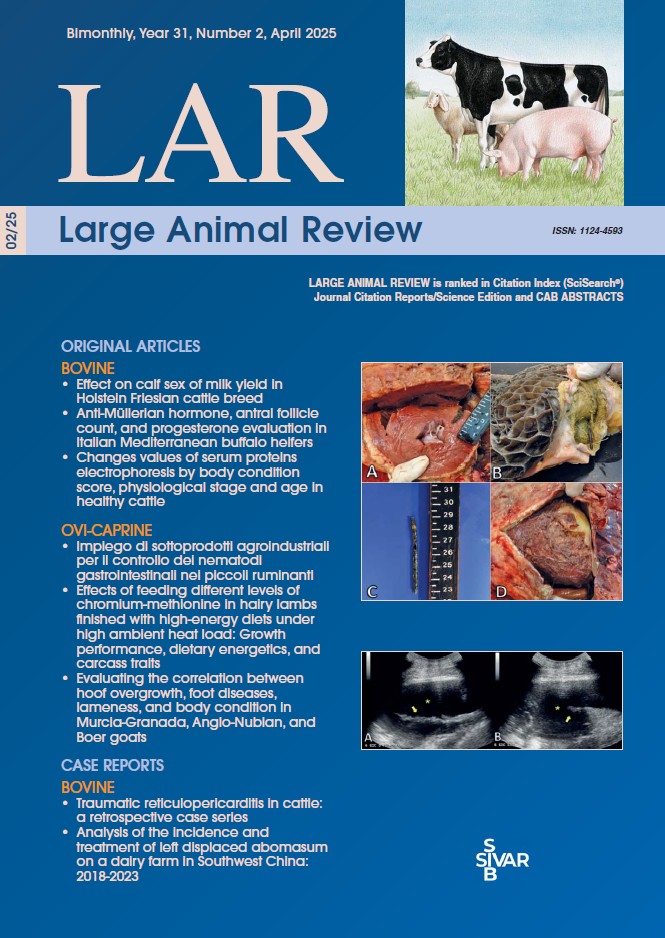Effects of feeding different levels of chromium-methionine in hairy lambs finished with high-energy diets under high ambient heat load
Growth performance, dietary energetics, and carcass traits
Abstract
The aim of this study was to evaluate different levels of chromium methionine (Cr-Met) supplemented in lambs fattening under high ambient heat load. For this reason, 40 Pelibuey × Katahdin castrated male lambs (34.28 ± 3.10 kg initial weight) were daily supplemented with 0.00, 0.60, 1.20 or 1.80 mg Cr/lamb during 56-d for determining treatments effects on growth performance, carcass characteristics, shoulder muscle tissue composition, and visceral mass. The experimental consisted in a randomized complete block design (5-pen blocks, 2 lambs per pen and 5 pens (10 lambs)/ treatment). The feeding program consisted in a total mixed high-energy corn-based finishing diet (87:13 concentrate to forage ratio). Air ambient and the relative humidity during the experiment averaged 29.7 ± 1.4°C and 67.8 ± 5.9%, respectively. This ambient condition resulted in an average of temperature humidity index (THI) of 80.6 which represents a high ambient heat load condition for the lamb productivity. Supplemental Cr-Met did not affect (P≥ 0.21) dry matter intake (DMI) but linearly increased (P<0.01) average daily gain (ADG), thus increased (P≤ 0.02) gain efficiency, dietary net energy, and observed-to-expected dietary net energy ratio. In consistence with the temperature and humidity ambient conditions, the observed to expected dietary NE ratio in the control group was 4% below of the anticipated (0.94) according to the estimated energy based in the ingredient composition in diet, while to 1.20 and 1.80 mg Cr/lamb/day supplemented group, the observed to expected dietary NE was as the expected (1.00), indicating a greater efficiency in energy utilization destined to growth even when they were fattening under high ambient load. There were no effects (P≥0.14) of Cr-Met on carcass weight, dressing percentage or longissimus muscle area. However, fat thickness (P=0.04) and kidney-pelvic-fat (P=0.01) were linearly reduced as Cr-Met ingestion was increased. Muscle tissue proportion in shoulder was linearly increased (P<0.01) and fat proportion was reduced (P<0.01) by Cr-Met supplementation. Whole cuts and visceral organ mass (expressed as g/kg empty body weight) were not affected by Cr-Met ingestion, but visceral fat was linearly reduced (P=0.04). It was concluded that ingestion of Cr-Met increased dietary energy utilization in feedlot lambs fattening under high ambient heat load and has a modulating effect on the carcass by reducing fat. Favorable responses on performance, dietary energy, carcass and tissue composition were reached when Cr was supplemented from the dose of 1.20 mg/lamb/day.


